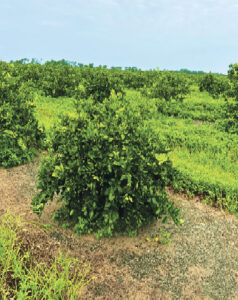By LEO CANNYN, PMP, P.E., ENV SP, Principal Project Manager, Beryl Engineering & Inspection
The number of structures in Florida has significantly increased and some experts are concerned the recent building boom could be damaging in the proverbial “long-run.” Florida has seen a construction frenzy and it is not limited to larger cities. Smaller towns are growing as many seek escape from other parts of the country.
According to the International Energy Agency (2022), the “built environment” generates 40% of annual global CO2 emissions. Of those total emissions, building operations are responsible for 27% while building and infrastructure/construction materials are responsible for the other 13% annually.
As “climate change” continues to be top of mind, sustainable design will be essential. Engineering and designing more environmentally-responsible buildings and improving sustainability are critical to lowering emissions.
Why sustainable engineering and design matters
Sustainable engineering and design can reduce a building’s negative environmental impact.
According to the World Commission on the Environment and Development, effective sustainable design is a comprehensive approach to choosing and integrating products and procedures that account for not only consumer enjoyment but also environmental conservation.
It’s the application of sustainable architecture, construction, planning, interior design, and landscaping techniques in buildings, reducing the potentially damaging impact on the environment. The goal is to minimize or eliminate excess energy consumption, reduce waste, and balance man-made with natural materials.
The benefits of sustainable design
• Waste Reduction: According to the Environmental Protection Agency (EPA), more than 600 million tons of waste debris are created by construction and demolition annually.
Choosing recycled or end-of-life materials mean these products get a second chance rather than ending up in a landfill.
• Durability: Products that can withstand harsh climates should be considered for any project, adding longevity to structures and value to investments.
• Improved Well-being: Safer building materials can significantly improve the health of occupants.
Incorporating certain products into a design, such as wood paneling or cladding systems, improves air quality, making a healthier indoor environment.
Additionally, the type of paint, carpets, etc. selected also impact air quality.
• Environmental Conservation: Installing well-insulated windows, doors, ceilings, and walls is critical to ensure energy is not wasted.
Programmable thermostats, low-flow plumbing, and quality insulation are options that save money and safeguard the environment.
• Noise Reduction: Noise pollution adversely affects millions of people annually.
According to the EPA, noise-related problems include stress-related illnesses, sleep disruption, and lost productivity.
Sustainable engineering and design can mitigate these issues with distance augmentation between noise sources and those affected.
Additionally, landscaping close to a noise source absorbs sound with the dual benefit of providing a natural resource and habitat for wildlife.
Get passionate about sustainable design
Smart design is an investment in community. It is time to tap into the expertise of engineer and design experts to create green elements and select materials that are not only environmentally friendly and cost-effective but improve everyone’s welfare.
Sustainable design can come in many forms, design, and budget.
Natural building materials
Using natural products with the lowest carbon imprint can complement surrounding landscape.
Using natural materials for siding, decking, and roofing can minimize the impact of any home or commercial building project.
Rooftop decks and terraces
Rooftops typically are underused. Flat roofs allow the opportunity to create urban gathering spaces; same for reimagined terraces.
Adding greenery reduces the impact of direct sunlight and keeps buildings cooler.
Low-maintenance siding
Durability is crucial in sustainability. Making a structure eco-friendly and ensuring it can sustain the elements for the next 100 years reduces waste and energy costs.
Building with sustainability in mind doesn’t rely on one or two techniques; it’s a complete thought process and strategy from design through build.
The positive effect made on the environment with sustainable engineering and design applications can’t be emphasized enough. With so many proven benefits, it only makes (dollars and) sense.●















































